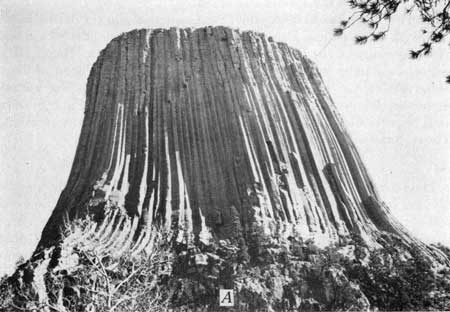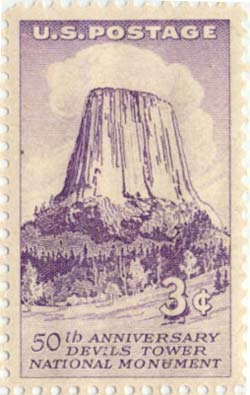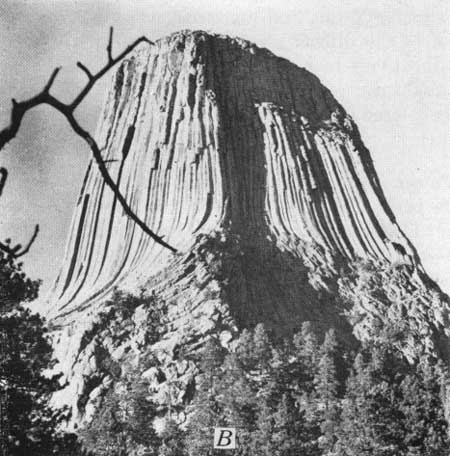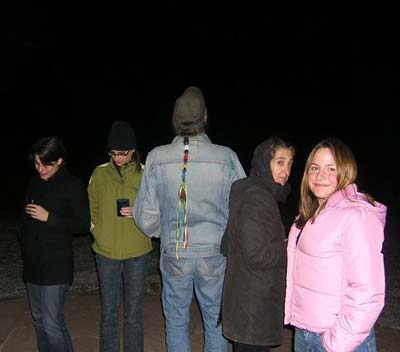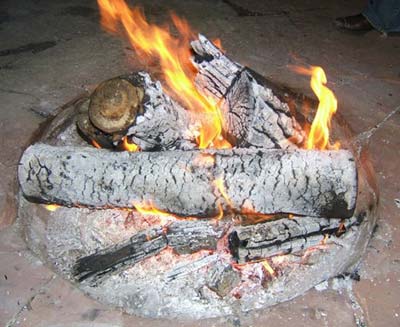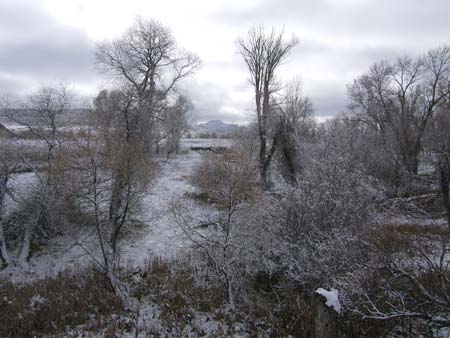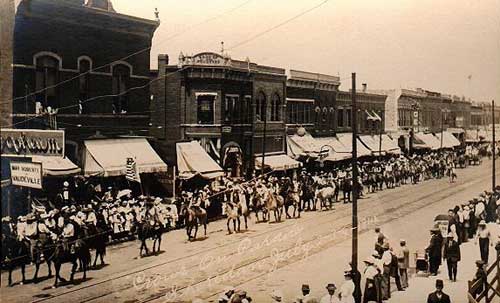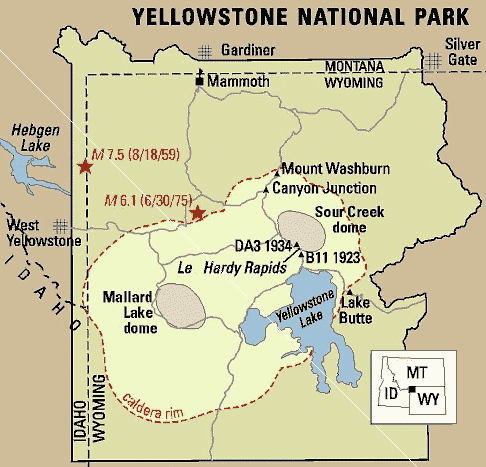First thing this morning I found Alex in the Depot kitchen making coffee with no socks on. “Not a good idea,” she said, the floor a mess of box elder carcasses. “Are you going over to the other side soon?” I asked, hoping for a lift to Big Red. Alex thought I was asking if she was dying.
“I’m thinking of going into Clearmont,” she said. Not quite heaven, but ten miles down the road, population one-fifteen and we’ve heard rumours there’s a liquor store there.
Ten minutes later, I’m on my way out the front door and Alex’s on her way in to get me. Boom. Comedic confusions and almost collisions – that’s how our day began.
Off-road trekking across the snow-melting lawn, we saw two rabbits chased each other around and around Alex’s car. “Ever since I got here,” she said. “Rabbits flock to my Subaru like it’s the mother ship and they’re waiting to be beamed up.”
The snow-covered hills east of Ucross rolled out pale blue-beige in a repeating pattern: same, different, familiar, new, same.
There’s no liquor store in Clearmont, only the Red Dawg Bar. To get the Red Dawg and the water tower into the same photo I had to step out into US 14 a bit. “Alert me of any oncoming traffic.” A freight train rolled through smelling of coal.
Alex took a picture of the Claremont Historical Jail sign.
“Shouldn’t that read Historic?”
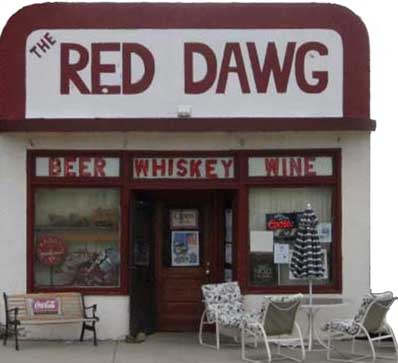
A stiff-legged woman with lots of earrings and no teeth came out of the Red Dawg to find out who we were and what we were doing taking pictures. “Such a great sign,” Alex said. “With the water tower behind it,” I added unhelpfully. The woman’s caved in face made her look extra sceptical. “Where’s the Historical Jail,” Alex asked. Brilliant move! Distract her with tourism.
Take a right on New York Avenue. The Historical Jail is under the water tower. To get out of town, take another right at the elementary school Drug Free Zone sign.
Back on US 14 Alex said she found people in Wyoming to be a suspicious lot. I’d only met friendly folks up until the toothless woman. I guess if I were an inhabitant of a town of a hundred and fifteen people and/or a Red Dawg regular I’d want to know why two never-before-seen women were taking pictures of my bar.
A few miles out of Clearmont a huge metal cross atop a small hill reminded Alex of Brazil and me of Montréal. I wondered if it was a memorial for a fatal car crash near there. A few minutes later, Alex said: “My car has lost power,” calm as anything, and steered us over to the shoulder. What happened? No idea. The owner’s manual was no help. We didn’t know what to look up. Ignition? How about Stopped? Well, at least the view is nice. Maybe we should get out of the car, take some photos. What an absurd day.
We stood on the side of the road and ogled the Big Horns and the mule deer and waved at passing pickups. They all waved back, but otherwise gave us a wide berth.
“Maybe we should pop the hood, that always works.” And a good thing we did too.
“A rabbit sabotaged my car!” Alex cried. The bright copper ends of chewed through wire glinted in the noonday sun.
“Now lets not be too hasty to lay blame. We don’t know the rabbits did it.”
“There’s rabbit hair.”
“Hmm… I guess that would be rabbit poop then.”
Alex rolled a cigarette and flipped through her owner’s manual some more. I attempted to twist the wire-ends back together but there wasn’t enough exposed copper to work with and, anyway, I didn’t really think it would work.
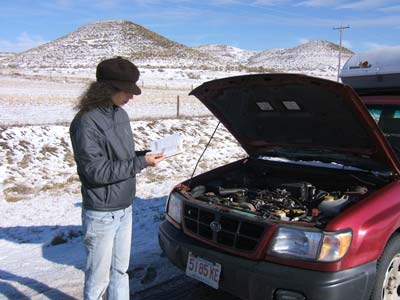
Alex stuck her head under the hood again but pulled it out in a hurry: “It’s still in there!”
“What?”
“The rabbit, it’s still in my car!”
“No way.” I did not believe her. “I don’t see any rabbit.”
“I saw its fur. Look straight down.”
Then I saw it!
“You should have seen the look on your face,” Alex was laughing so hard.
“I just saw that look on your face!”
“This is so awful!” she said, but we couldn’t stop laughing.
“Do you think it’s gone over to the other side?”
The mule deer glared at us, like: You two are so hopeless. Will you please keep it down.
We knew where we were, and that we were less than ten miles from where we wanted to be. There was a rabbit in Alex’s car, dead or otherwise. The car had Massachusetts plates. And brand spanking new pickup trucks passed us at speeds exceeding the sound barrier. We didn’t have a cell phone – not that it’d work in Wyoming’s hills and holes. We set in to discussing the options. Well. We could walk it. Or one of us could. How long would it take? I don’t mind doing it, just depends if you want to leave your car or not. What happens when you leave your car on the side of the road in Wyoming?
“Maybe we should push it further off the road.”
“Toward that post?”
More gales of laughter, more glares from the deer.
Right around when we were getting ready to set out on foot, an ancient boxy two-tone pick up rounded the bend, coming straight out of the Pleistocene and headed our way. It slowed. It stopped for us! Yeah!
Norma Mally is our new favourite person in all of Wyoming. We said, “We’re so glad you stopped for us. No one else would.” She said, “I’m local. They’re all up here working the methane.” Norma used to dry ranch eight miles east of somewhere out by Recluse. “I’m too old now,” she said. “Now we run cattle.” She had nothing good to say about rabbits. “The rabbits is bad out by us,” she said. “They got my neighbour,” she said, meaning they got her neighbour’s truck.
“I’m a peaceful person,” said Alex. “I’ve been swerving to miss them.”
“You’ll be going the other way now I bet.”
“Like a video game.”
Norma Mally drove us right up to the Big Red Ranch House. “Where are you from?” she asked. New York. Montréal. “I was stationed over in Washington five years in the Air Force,” she said. There go the suspicious theories. Wyoming rancher Norma Mally offering us up an east coast connection may have been even more generous than offering us a ride.
Alex’s version of the story told so far diverges from mine in a number of ways:
While I could hardly concentrate on a word the toothless woman was saying because a) her sunken face made her expression so hard to read and b) she wasn’t exactly toothless – she had the turned in gums and chalky yellow stumps of heavy and prolonged crystal-meth use, Alex didn’t notice because was understandably distracted by her abnormally enormous and erratically pieced ears.
Ironic considering when Norma Mally said those guys who didn’t stop to help us weren’t local, they were here working methane; Alex understood that they were all on crystal-meth. Some of them could well have been, but methane gas is one of the biggest industries in Wyoming and those were damn expensive pickup trucks passing us, so it’s more than likely those guys were out-of-state workers without an ounce of neighbourly feeling. The methane industry is notoriously shortsighted. The drilling pollutes and depletes the water table. There’s so much methane in our tap water we can’t drink it.
I’m sure there are other discrepancies besides. I think we got off lucky considering our day began with confusion over whether “the other side” meant the other side of the pasture or life after death.
Alex spent the rest of the afternoon chasing after insurance, towing, garages and mechanics. For more about these details read her post, number 154, on this website: http://wombatnation.com/2005/01/mice-ate-my-car
At dinner that night she said, “So guess what, the rabbit was still in the car.” I was confused, having not yet heard about how, when Reed gave Alex a lift back out to her car, the rabbit appeared to be gone. Reed spliced the chewed wires together so Alex could to drive to the garage in Buffalo. Man I would’ve felt like a hero if I’d made that work. The mechanic found the rabbit again, very much alive, hiding in a different spot. It took four people to get it out.
It turns out the precise reason we lost power is, the rabbit chewed the wire to the alternator. I could make us both sound a lot smarter about cars by going back and inserting that detail mid-story, but I’m not going to. Not just yet.
“Out on the lawn the rabbits were perfectly still. Then they sprang up in the air, turning and dropping and landing and then freezing again. Catherine stood at the window of the bathroom, towelling her hair. She turned the bathroom light off, so that she could see them better. The moonlight picked out their shining eyes, their moon-coloured fur, each hair tipped in paint. They were playing some rabbit game like leapfrog. Or they were dancing the quadrille. Fighting a rabbit way. Did rabbits fight wars? Catherine didn’t know. They ran at each other and then turned and darted back, jumping and crouching and rising up on their back legs. A pair of rabbits took off in tandem, like racehorses, sailing through the air.”
Kelly Link, “Stone Animals,” in The Best American Short Stories 2005, ed. Michael Chabon, Boston, NY: Houghton Mifflin Company, 2005, pages 96-97.
. . . . .
